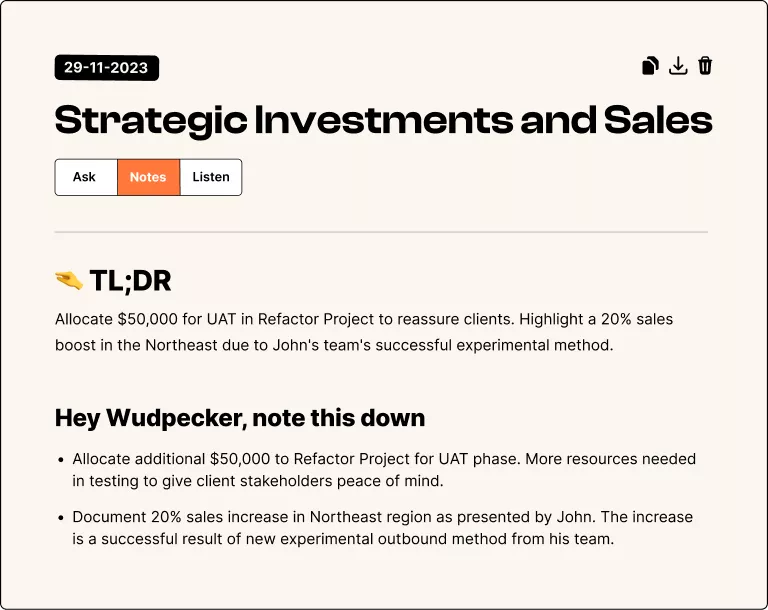Efficient data flow between product analytics and BI tools is key to making better decisions and driving business growth. Here's why connecting these systems matters and how to do it effectively:
- Why it’s important: Combine product usage data with business metrics to detect churn risks, discover upsell opportunities, and improve reporting efficiency.
- What product analytics does: Tracks feature adoption, user engagement, and behavior patterns.
- How to integrate with BI tools: Use APIs for real-time updates, batch processing for historical data, or data warehouses for complex datasets.
- Best practices: Validate data, remove duplicates, and standardize formats. Choose between real-time, micro-batching, or batch processing based on your needs.
- Scalability tips: Partition data, use caching, and optimize queries for growing data volumes.
- ETL process: Extract raw data, transform it into usable metrics, and load it into BI tools for actionable insights.
Mixpanel & BI Tools
Data Collection and Integration Methods
Integrating product analytics with BI tools requires thoughtful planning. Here’s a breakdown of the main methods and practices for collecting and transferring data effectively.
Collecting Data from Product Analytics
Userlens gathers essential usage metrics automatically, including:
- Activity tracking: Capturing user interactions with specific features.
- Usage patterns: Monitoring session lengths, usage frequency, and feature adoption rates.
- Company-level insights: Summarizing user behavior within customer accounts.
Transferring Data to BI Systems
There are several ways to move data into BI tools, each suited for different needs:
| Method | Description | Best Use Case |
|---|---|---|
| API Integration | Transfers data in real time via REST or GraphQL APIs. | Ideal for metrics that need frequent updates. |
| Batch Processing | Moves data at scheduled intervals. | Works well for large sets of historical data. |
| Data Warehouse | Acts as a central hub for multiple data sources. | Useful for combining and analyzing complex datasets. |
The best method depends on factors like data size, how often updates are needed, and the type of analysis being performed. Automating these pipelines can save time and ensure a steady flow of accurate data.
Ensuring Data Quality
1. Data Validation
Check data for completeness, consistent formatting, and logical accuracy. For example, confirm user IDs match across systems and timestamps follow the same structure.
2. Deduplication and Transformation
- Remove duplicate records or events.
- Standardize timestamps.
- Normalize user IDs.
- Use consistent naming for features.
- Aggregate raw events into useful metrics.
These steps help create a reliable and efficient data integration framework.
Data Flow Architecture Design
Creating an effective data flow architecture means seamlessly connecting product analytics with BI systems. Here's how to build strong, reliable data pipelines.
Standard Data Flow Methods
Your choice between real-time streaming and batch processing depends on what your analysis requires:
| Data Flow Method | Processing Speed | Resource Usage | Best For |
|---|---|---|---|
| Real-time Streaming | Milliseconds to seconds | Higher | Live dashboards, immediate alerts |
| Micro-batching | Minutes | Moderate | Near real-time reporting |
| Batch Processing | Hours | Lower | Historical analysis, daily reports |
For real-time streaming, use message queues to handle traffic spikes. Schedule batch processing during less busy hours to optimize resources.
Key Tips for Implementation:
- Add validation checks at both the source and destination points.
- Set up retry mechanisms for failed data transfers.
- Track data latency and throughput to ensure smooth operations.
- Keep data schemas consistent across all systems.
These practices help create a system that can grow alongside your data needs.
Building for Scale
When data volumes grow, your architecture should keep up. Here are some strategies to maintain performance:
Data Partitioning
Break large datasets into smaller, logical chunks (e.g., by date ranges or customer groups). This makes queries faster and data management easier.
Caching Strategy
Set up a multi-level caching system:
- Hot data: Frequently accessed metrics stored in memory.
- Warm data: Recent data stored in fast-access storage.
- Cold data: Older, historical data stored in cost-efficient solutions.
Performance Optimization
Boost system efficiency with these steps:
1. Query Optimization
Write queries that:
- Use proper indexing for faster lookups.
- Limit JOIN operations where possible.
- Use materialized views for complex calculations.
2. Resource Management
Enable auto-scaling to adjust for processing load, query complexity, and user demand.
3. Data Retention
Apply a tiered retention policy:
- Keep real-time data for 7 days.
- Store aggregated metrics for 90 days.
- Archive historical data for over one year.
Next, we’ll explore how raw data is transformed into actionable insights using efficient ETL processes.
sbb-itb-6285ddb
Converting Raw Data into Business Insights
Turn raw product analytics into meaningful insights through effective data processing and visualization.
ETL Process Steps
The Extract, Transform, Load (ETL) process is key to turning raw data into actionable intelligence. Here's how it works:
Extract Phase
- Pull raw event data, ensuring it includes complete user context.
- Gather metadata like timestamps and user properties.
- Incorporate session details for a fuller picture.
Transform Phase
Apply these transformations to make the data useful:
| Transformation | Purpose | Example Output |
|---|---|---|
| Data Cleaning | Eliminate duplicates/errors | Deduplicated user sessions |
| Data Enrichment | Add business context | Revenue by customer segment |
| Data Aggregation | Summarize key metrics | Daily active users per team |
| Data Standardization | Normalize formats | Consistent date/time formats |
Load Phase
- Track data lineage for transparency.
- Use incremental loading for efficiency.
- Perform quality checks to ensure reliability.
- Create indexed views to speed up queries.
Once the data is loaded and verified, you can move on to creating visualizations that support strategic decision-making.
Building Reports and Dashboards
Focus on these key visualizations to gain insights:
-
Feature Adoption Tracking
- Identify most-used features by customer segment.
- Analyze feature adoption trends over time.
- Examine usage patterns across different user roles.
-
Customer Health Monitoring
- Track daily and monthly active users.
- Measure time spent on key features.
- Monitor task completion rates.
- Review session frequency and duration.
-
Business Impact Views
- Explore the connection between feature usage and customer retention.
- Assess user engagement alongside account growth metrics.
- Analyze activity patterns linked to business outcomes.
Dashboard Design Tips:
- Group related metrics for clarity.
- Use consistent colors to make data easier to interpret.
- Add clear titles and descriptions for context.
- Include date ranges and filters for flexibility.
- Enable drill-down options to explore data in detail.
To keep dashboards running smoothly, materialize frequently accessed metrics and schedule updates during off-peak hours. This ensures optimal performance and builds on the solid data pipelines and quality standards already in place.
Improving Data Flow Performance
Data Security and Compliance Steps
Boosting data flow performance isn't just about speed and scalability - it also requires a solid security framework to protect sensitive information and meet GDPR requirements.
Here are some key practices to consider:
-
Encryption Standards:
- Use AES-256 encryption for data stored on servers.
- Enforce HTTPS protocols to secure data during transmission.
-
Compliance and Governance:
- Store data on EU-based servers to align with GDPR guidelines.
- Regularly review your data architecture, flow processes, and agreements.
- Establish a dedicated team to oversee compliance and governance.
Conclusion: Connecting Analytics and BI Systems
Bringing together product analytics and BI insights enables smarter, data-driven decisions. By focusing on effective data collection, integration, and architecture, you can create a seamless flow of information. Here are the key points to consider:
Key Focus Areas for B2B SaaS Teams
To make the most of your data, prioritize these areas: integration strategy, workflow efficiency, and performance management.
Data Integration Strategy
- Link product analytics tools to measure user engagement effectively.
- Ensure secure data transfer and compliance with standards like HTTPS, AES-256, and GDPR.
- Define and maintain clear data governance policies.
Workflow Efficiency
- Simplify setup with pre-built dashboards.
- Automate data collection to save time and reduce errors.
- Regularly validate data to ensure accuracy and reliability.
Performance Management
- Enable real-time data syncing for critical metrics.
- Build scalable systems to handle growing data needs, including strong ETL processes and enhanced security.
- Prioritize security and compliance measures to protect sensitive information.
These practices turn raw data into actionable insights, helping you refine your product and better meet customer needs.
Combining customer usage data with BI insights provides a comprehensive view of behavior. This approach allows teams to:
- Detect early signs of churn.
- Uncover opportunities for upselling.
- Set clear priorities for product development.
- Take proactive steps to improve customer success.
With Userlens, teams can seamlessly integrate product analytics and BI insights to make informed, forward-thinking decisions.
Related posts



.svg)



















.svg)
